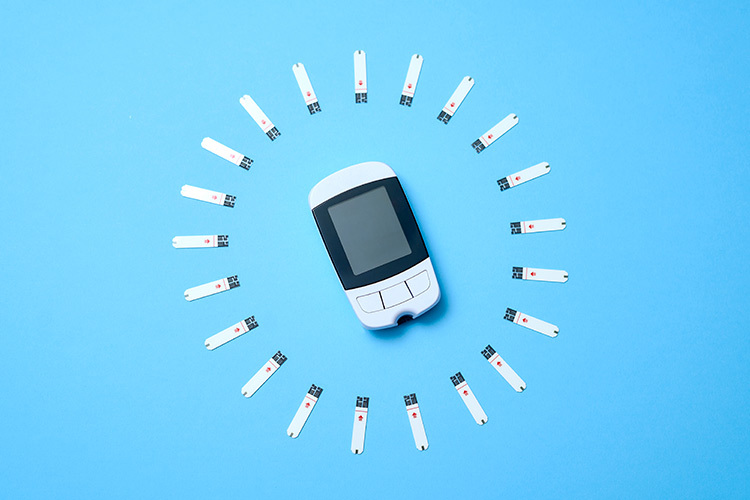Type 2 diabetes typically manifests between the ages of 30 and 40, but the window for prevention opens a decade earlier. Researchers at Tec de Monterrey are harnessing Artificial Intelligence (AI) algorithms and neural networks to monitor glucose levels in individuals with various risk factors, aiming to stave off the onset of this disease.
By integrating AI with sensors that track blood sugar levels, they can predict glucose spikes in advance and prevent the development of diabetes mellitus.
Predicting glucose spikes is crucial as these spikes can accumulate over time, progressively increasing the risk of developing diabetes. The research team, comprising biomedical engineering professors and students, is at the forefront of this innovative approach.
“In the Mexican population, there is a strong predisposition to diabetes, and the public health cost is exorbitant. Being able to predict glucose spikes and raise awareness about the potential for developing this disease will enable people to take precautionary measures,” says Professor Mariel Alfaro.
Type 2 diabetes is characterized by elevated blood glucose levels due to insufficient insulin production. Its development is linked to obesity, lack of physical activity, and genetic factors.
Artificial Intelligence for Diabetes Prevention
Drawing from previous experiences with continuous glucose monitors and a preventive approach, researchers saw the potential to leverage the wealth of information these sensors provide and apply algorithms to predict the incidence of diabetes.
“We found articles on using algorithms to predict diabetes incidence; however, many of these studies focus on individuals who are already diagnosed with diabetes. Currently, the disease appears between ages 30 and 40, but the prevention stage should start a decade earlier,” explains Elías Díaz.
With this in mind, they conducted a clinical study with individuals aged 20 to 30 who were not diagnosed with diabetes but had at least one risk factor for metabolic syndrome. These factors included body mass index, waist circumference, genetic predisposition, visceral fat percentage, sedentary lifestyle, sleep duration, and a diet high in carbohydrates.
For 15 days, the group used Abbott sensors and followed a Mediterranean diet, low in carbohydrates and high in dietary fiber, to record glucose levels around the clock, says Itzel Gutiérrez. They also employed two algorithms to process the data.
“The model takes various input factors, such as adherence to the diet, waist measurements, and other conditions that could influence whether someone develops diabetes. The model itself is composed of multiple algorithms that work together to provide a prognosis of what might happen,” says Mariel Alfaro.
The first tool used in the study was based on a statistical model known as “chi-square,” which helped identify the most significant risk factors for diabetes propensity. Based on these factors, a neural network classifier was trained to predict the development of the disease.
Additionally, to forecast glucose spikes, Long Short-Term Memory (LSTM) recurrent neural networks were utilized. These networks, with their long-term memory capabilities, related the data collected during the study to predict future sequences.
“If a person is going to develop diabetes, it will be reflected in their risk factors and the glucose spikes they experience,” notes Andrea Ramos.
Harnessing AI to Alert and Raise Awareness About Diabetes
According to the study, leveraging the combined power of risk factor analysis and machine learning techniques enables doctors to effectively guide individuals at risk of developing type 2 diabetes.
The model developed in the study cannot precisely predict when a person might develop diabetes, says Iván Matehuala. However, it successfully forecasts glucose levels at two, five, and seven days.
“The goal is to alert users when glucose spikes occur and to provide actionable insights to prevent these spikes from persisting, ultimately reducing their frequency over time,” he adds.
Matehuala points out that, in the short term, there will likely be a surge in the use of continuous glucose monitors. He envisions AI models leading to the creation of apps, interfaces, and alert systems that notify users when their glucose levels rise, prompting them to take measures to regulate it.
“The algorithm doesn’t predict that you’ll become diabetic in five years, but by forecasting these glucose spikes, the intention is to show that if you continue with your current lifestyle and don’t adhere to a diet, you could develop the disease,” Matehuala explains.
Did you find this story interesting? Would you like to publish it? Get in touch with our content editor to find out more at marianaleonm@tec.mx


















